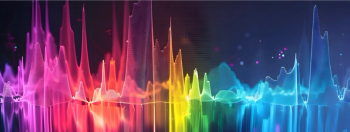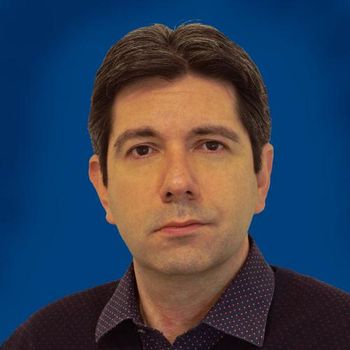
The Potential of Mass Spectrometry in Planetary Exploration: An Interview with Kelsey Williams, Part II
Key Takeaways
- MASPEX, a high-resolution mass spectrometer, is set to explore Europa, detecting large molecules and encouraging innovation in ionization techniques.
- Williams is enhancing LIBS for lunar use, addressing challenges of plasma expansion in the Moon's vacuum to improve signal detection.
In this extended Q&A interview, we sit down with Kelsey Williams, a postdoctoral researcher at Los Alamos National Laboratory (LANL), who is working on planetary instrumentation using spectroscopic techniques such as laser-induced breakdown spectroscopy (LIBS) and laser ablation molecular isotopic spectrometry (LAMIS). In Part II of our conversation with Williams, she talks about the potential of mass spectrometry (MS) in space exploration applications.
National Space Day celebrates and recognizes the current contributions of analytical spectroscopy in the field of space exploration. In this extended Q&A interview, we sit down with Kelsey Williams, a postdoctoral researcher at Los Alamos National Laboratory (LANL), who is working on planetary instrumentation using spectroscopic techniques such as laser-induced breakdown spectroscopy (LIBS) and laser ablation molecular isotopic spectrometry (LAMIS) (1–3).
In Part I of our interview with Williams, she discusses how her background led her to her current position at LANL. In Part II of our conversation with Williams, she talks about the potential of mass spectrometry (MS) in space exploration applications.
Can you discuss one area within mass spectrometry that you find especially exciting or promising for future applications, and why?
I recently attended a planetary science conference, and there was a lot of discussion about mass spectrometry (MS) in space. MS in space isn't new, but the newest instrument, to my knowledge, is called MASPEX. It stands for mass spectrometer for planetary exploration, and it's part of the Europa Clipper. It's going to one of Jupiter's moons, Europa, to detect any sort of life-sustaining molecules. The interesting thing about this instrument is that it has the highest resolution and the highest mass range currently in space. So, you can get large molecules that you wouldn't typically be able to detect with the current MS that is currently out in space, but you can also do it at the highest resolution. I think that encourages innovation when it comes to the ionization side, because right now, I think electron ionization is the only thing that's being used. With the improvements in the mass analyzer, I think it will encourage people to look towards different ionization sources. It's going to encourage the other portions of the instrument to kind of follow suit and start adapting to what's becoming available, and I think that's exciting for the future of MS, especially in space.
What research do you conduct at Los Alamos National Laboratory, and how does it apply to space exploration?
I came to Los Alamos National Laboratory as a postdoc to do planetary science and develop instrumentation for planetary applications, which I never thought in a million years I would be able to do right out of graduate school. Right now, I'm working to improve LIBS capabilities. We have two great instruments on Mars in ChemCam and SuperCam, but we don't want to stop there, right? We learn more every time we send these instruments to a planetary body and how to improve them. But one thing that we're currently working towards is designing an instrument that would be suitable for the Moon. LIBS requires measurement from a plasma generated by a laser. One interesting thing about the technique is that on Earth and even on Mars, with the limited atmosphere that's there, the plasma is contained and prevented from rapidly expanding and dissipating, making it easier to detect. But on the Moon, because it's a vacuum, rapid expansion and dissipation of the plasma happens and results in lower intensity signals. What I'm working on is how we are going to be able to take this technology and make it as useful as it is on Mars on the Moon. That involves looking at the samples this is suited for. How do we maximize our signal, and how do we adjust our optical setup to maximize that signal into the spectrometer?
That's one part of what I'm working on here. Another side of things is that I am also working on the LAMIS technique that I mentioned previously. The instrumentation for LAMIS is the same as LIBS, except you detect emission at a later time. And the interesting thing about that is that you allow these molecular diatomics to form, and with that, you detect emission characteristics that relax the requirement on the instrument resolution, and it allows you to detect isotope distribution optically, which is a unique capability.
It's recently been developed, but it hasn't been investigated in the planetary side of things very much yet. And so, what I'm working towards now is understanding what the best way is to apply this technique to planetary samples, and how to optimize a system to obtain the best signals possible that it enables us to get useful isotopic information for the planetary science community.
References
- Wetzel, W. The Impact of LIBS on Space Exploration: Mars. Spectroscopy. Available at:
https://www.spectroscopyonline.com/view/the-impact-of-libs-on-space-exploration-mars (accessed 2025-04-23). - McMillan, N. Laser-Induced Breakdown Spectroscopy (LIBS). Carleton.edu. Available at:
https://serc.carleton.edu/msu_nanotech/methods/libs.html (accessed 2025-04-23). - Wetzel, W. Celebrate National Space Day with Spectroscopy. Spectroscopy. Available at:
https://www.spectroscopyonline.com/view/celebrate-national-space-day-with-spectroscopy (accessed 2025-04-23)
Newsletter
Get essential updates on the latest spectroscopy technologies, regulatory standards, and best practices—subscribe today to Spectroscopy.





